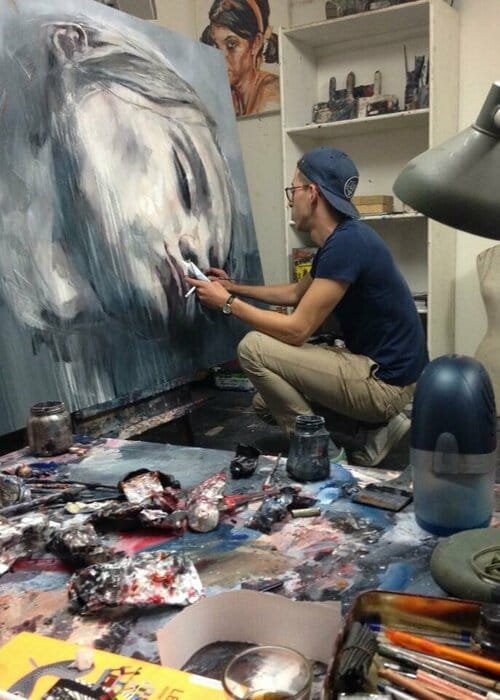Chandigarh, March 23 — Art, in its many forms, has always been a powerful medium of expression, communication, and influence. For visual artists—whether painters, sketchers, or illustrators—their creations are more than just visual representations; they are reflections of their emotions, thoughts, and perspectives. Through every brushstroke or pencil line, artists share their unique narratives, challenge societal norms, or simply offer a glimpse into their inner worlds.
For most artists, the creative process is deeply personal. It often begins with an idea, emotion, or observation that gradually takes shape on canvas or paper. Painters typically use color, texture, and form to evoke specific moods, while sketch artists rely on lines, shading, and composition to convey detail and depth.
Many artists describe their process as therapeutic. The act of painting or sketching allows them to release pent-up emotions or make sense of complex feelings. Some use their art to document personal experiences—whether joyous, melancholic, or reflective—transforming them into visual stories. For instance, artists grappling with grief might create dark, abstract pieces, while those inspired by love might produce vibrant, flowing compositions.
Beyond personal expression, many artists use their work to raise awareness about social, political, or environmental issues. Through powerful imagery, they reflect the realities of society, challenge injustices, or advocate for change.
For example, street artists often use public spaces to address issues such as inequality, climate change, or human rights violations. Their murals, often bold and direct, provoke thought and spark conversations. Similarly, portrait artists sometimes capture the struggles or resilience of marginalized groups, giving visibility to voices often ignored.
Sketch artists, too, use their craft for commentary. A single pencil sketch—whether a caricature or a realistic portrait—can encapsulate a powerful message. Editorial cartoonists, for instance, use sharp, witty sketches to critique politicians or policies, while fine artists may create thought-provoking charcoal pieces that reflect on war, poverty, or identity.
Art possesses the rare ability to stir emotions and forge connections between the creator and the viewer. Through colors, shapes, and forms, artists tap into universal feelings of joy, sorrow, hope, or nostalgia.
A painter working with bold, contrasting colors might create a sense of tension or excitement, while softer hues might evoke calmness or melancholy. Sketch artists, on the other hand, use light and shadow to add emotional weight, creating pieces that feel raw and intimate.
Artists often use symbolism and metaphors in their work, allowing viewers to interpret the art through their own lens. This interplay between the artist’s intent and the viewer’s perception makes art an evolving and deeply personal experience.
Many artists use their work to tell stories—whether personal, fictional, or historical. Through a single painting or a series of sketches, they transport viewers to different times, places, or states of mind.
For instance, an artist inspired by nature might create a series of watercolors depicting the changing seasons, symbolizing the passage of time. Similarly, a portrait artist might capture a subject’s life story through subtle details—a weathered face, tired eyes, or hopeful expression.
Illustrators, particularly in children’s books, use their visual storytelling skills to spark imagination and convey moral lessons. Their art complements the written word, adding depth and emotion to the narrative.
In recent years, visual art has become a vital tool for activism. Protest art, for example, uses bold imagery and symbolism to challenge authority or voice dissent. During global movements, artists often create impactful works that capture the essence of the cause, turning art into a visual rallying cry.
Art exhibitions and installations have also become platforms for addressing contemporary issues. Artists use their creative voices to shed light on mental health, gender equality, or cultural preservation, encouraging dialogue and empathy.
Whether through intricate sketches, sweeping oil paintings, or minimalist watercolors, artists use their creativity to interpret the world around them. Their work offers viewers a window into different perspectives, emotions, and experiences. More than mere decoration, art becomes a language of its own—one that speaks of beauty, struggle, hope, and humanity.
For artists, every canvas or sketchbook is a platform to share their vision, making art not only a form of expression but also a force capable of inspiring change and shaping perceptions.

